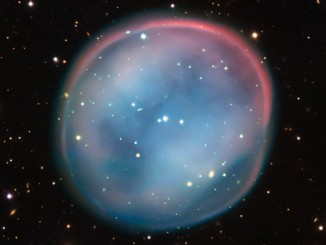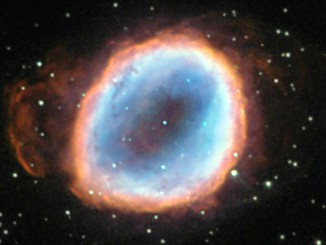
Planetary Nebula


Catch sight of a celestial owl flying overhead in the spring sky
Owls may be scarce near your favourite viewing spot, but the Northern Hemisphere spring sky contains one celestial owl that you can track down in small telescopes – Messier 97 (NGC 3587). Commonly called the Owl Nebula, M97 is a planetary nebula discovered by Pierre Méchain in 1781 that is currently ideally placed for observation almost overhead at nightfall in the constellation of Ursa Major, the Great Bear.

Seek out the celestial treasures within the Summer Triangle
At the beginning of August, keen observers in the heart of the UK can celebrate the return of truly dark skies around 1am BST. But the naked-eye stars are out by 11pm, and if you cast your gaze two-thirds of the way from southeast horizon to overhead at this time you can see the so-called Summer Triangle in all its glory. Here’s our guide to some of the celestial highlights therein.

Hubble reveals a cosmic trick of the eye
While truly massive stars go out in a blaze of glory, intermediate-mass stars — those between roughly one and eight times the mass of the Sun — are somewhat quieter. Such stars eventually form cosmic objects known as planetary nebulae, so named because of their vague resemblance to planets when seen through early, low-resolution telescopes.

Dying star offers glimpse of our Sun’s future
This planetary nebula is known as Kohoutek 4-55 (or K 4-55). It is one of a series of planetary nebulae that were named after their discoverer, Czech astronomer Luboš Kohoutek. Such a nebula is formed from material in the outer layers of a red giant star that are expelled into interstellar space when the star is in the late stages of its life.

The icy blue wings of a bipolar planetary nebula
Planetary nebulae such as Hen 2-437 form when an ageing low-mass star — such as the Sun — reaches the final stages of life. The star swells to become a red giant, before casting off its gaseous outer layers into space. Hen 2-437 is a bipolar nebula — the material ejected by the dying star has streamed out into space to create the two icy blue lobes pictured here.

Hubble sees an ageing star wave goodbye
When stars that are around the mass of the Sun reach their final stages of life, they shed their outer layers into space, which appear as glowing clouds of gas called planetary nebulae. In the case of Menzel 2, otherwise known as PK 329-02.2, the nebula forms a winding blue cloud that perfectly aligns with two stars at its centre.

Hubble’s new view of the Butterfly Nebula
This new NASA/ESA Hubble Space Telescope image of the Twin Jet Nebula highlights the shimmering colours, shells and knots of expanding gas in striking detail. Two iridescent lobes of material stretch outwards from a central star system. Within these lobes two huge jets of gas are streaming from the star system at speeds in excess of one million kilometres per hour.

The ghost of a dying star — the Southern Owl Nebula
This extraordinary bubble, glowing like the ghost of a star in the haunting darkness of space, may appear supernatural and mysterious, but it is a familiar astronomical object: a planetary nebula, the remnants of a dying star. This is the best view of the little-known object ESO 378-1 yet obtained and was captured by ESO’s Very Large Telescope in northern Chile.

The long goodbye of a dying star
A dying star’s final moments are captured in this image of planetary nebula NGC 6565 in Sagittarius from the NASA/ESA Hubble Space Telescope. The death throes of this star may only last mere moments on a cosmological timescale, but this star’s demise is still quite lengthy by our standards, lasting tens of thousands of years.
